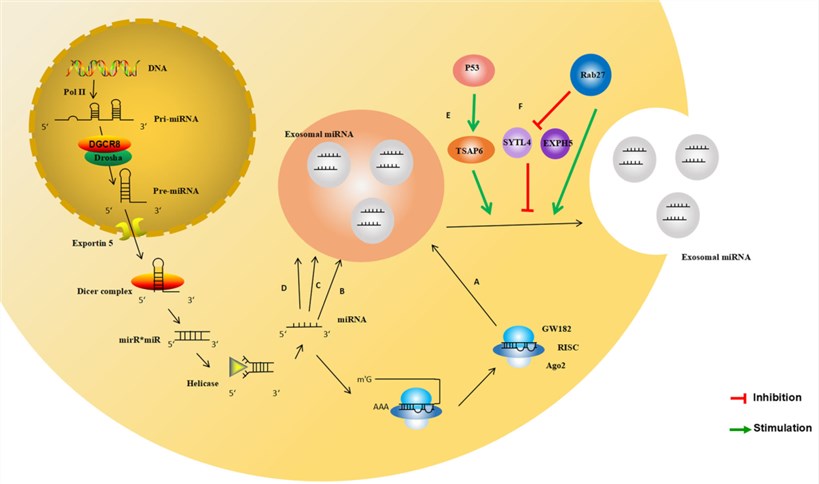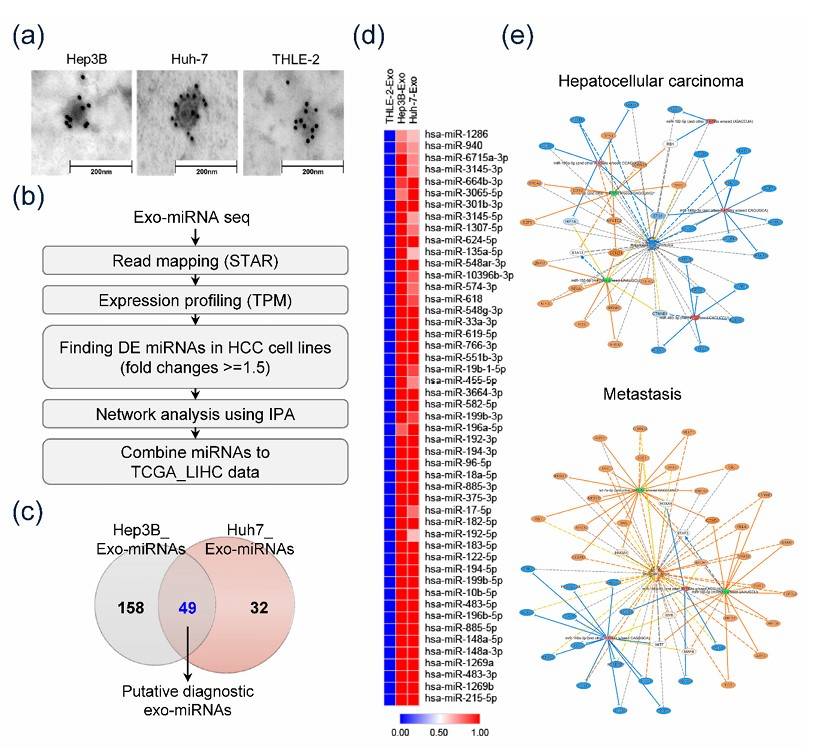Exosomal Small RNA/miRNA Sequencing Service
Overview Services Features FAQs
Exosomal small RNAs, or miRNAs, are useful biomarkers for the early detection of a variety of illnesses, particularly cancer. Creative Biolabs makes every effort to offer expert and superior exosomal small RNA/miRNA sequencing services to completely characterize the significance of exosomal miRNA in disease diagnosis.
The Roles of Exosomal Small RNA/miRNA
MicroRNAs (miRNAs), a class of non-coding short RNAs with roughly 19–25 nucleotides, are among the known exosomal RNAs that can be transported between cells that have exosomes and absorbed by nearby or distant cells. It has been established that these exosomal miRNAs have important roles in the control of numerous biological processes, including gene expression and intracellular communication, as well as pathological conditions.
 Fig.1 The sorting mechanism of exosomal miRNA.1, 3
Fig.1 The sorting mechanism of exosomal miRNA.1, 3
A thorough and precise knowledge of exosomal miRNAs can be extremely helpful in the development of noninvasive diagnostic techniques, improved patient prognoses, and even successful therapeutic interventions. Next-generation sequencing is a practical and effective technique for exosomal miRNA research and identification as gene sequencing technology advances. By comparing the exosomal miRNA sequencing of diseased and healthy participants, exosomes harboring disease-related miRNAs, also known as exosomal miRNA biomarkers, can be recognized and identified. To be more exact, exosomal small RNA, or miRNA, sequencing can tell us exactly how many and what kind of exosomal miRNAs there are.
 Fig. 2 Exosomal microRNA sequencing and detecting specifically overexpressed exo-miRs in hepatocellular carcinoma.2, 3
Fig. 2 Exosomal microRNA sequencing and detecting specifically overexpressed exo-miRs in hepatocellular carcinoma.2, 3
Exosomal small RNA/miRNA Sequencing Services at Creative Biolabs
Creative Biolabs provides qualified and comprehensive exosomal small RNA/miRNA sequencing services to advance the development of exosome-based drug discovery. Our one-stop exosomal small RNA/miRNA sequencing service workflow is mainly as follows:
 Fig. 3 Workflow of exosomal small RNA/miRNA sequencing services.
Fig. 3 Workflow of exosomal small RNA/miRNA sequencing services.
Features
-
Comprehensive Small RNA/miRNA Profiling: Uncover the diverse landscape of small RNA and miRNA molecules within exosomes with high-throughput sequencing technologies.
-
Identification of Regulatory RNAs: Identify key regulatory RNAs involved in intercellular communication, disease progression, and biological processes.
-
Differential Expression Analysis: Analyze differential expression patterns of small RNAs and miRNAs to unravel molecular mechanisms and potential biomarkers.
-
Functional Annotation: Gain insights into the functional roles of small RNAs and miRNAs through comprehensive annotation and pathway analysis.
-
Customized Data Analysis: Tailor data analysis pipelines to meet specific research objectives and generate meaningful insights.
-
Bioinformatics Expertise: Access bioinformatics support from skilled analysts to interpret sequencing data and extract valuable information.
-
High Sensitivity and Specificity: Detect low-abundance small RNAs and miRNAs with high sensitivity and specificity, crucial for biomarker discovery and characterization.
-
Quality Control Measures: Implement strict quality control measures to ensure the accuracy and reliability of sequencing data.
Please refer to our sequencing workflow at Creative Biolabs, and feel free to contact us, our experienced technicians will give you the most detailed answers to your questions.
FAQs
Q: How can Exosomal Small RNA/miRNA Sequencing contribute to research?
A: By characterizing the small RNA cargo of exosomes, researchers can gain insights into intercellular communication mechanisms, biomarker discovery, and potential therapeutic targets. This information is valuable for studying cancer, neurodegenerative diseases, immune responses, and other biological processes.
Q: Is Exosomal Small RNA/miRNA Sequencing suitable for all research projects?
A: Exosomal Small RNA/miRNA Sequencing is particularly beneficial for studies focusing on extracellular vesicles, intercellular communication, biomarker discovery, and RNA-based regulatory mechanisms. Researchers interested in understanding the roles of exosomal small RNAs in cellular signaling pathways can benefit from this service.
Q: What sample types are compatible with Exosomal Small RNA/miRNA Sequencing?
A: Exosomal Small RNA/miRNA Sequencing can be performed on various biological samples, including cell culture supernatants, blood plasma, urine, and other biofluids known to contain exosomes. Researchers can choose the appropriate sample type based on their research objectives.
Q: How can interpret the results of Exosomal Small RNA/miRNA Sequencing?
A: Analysis of Exosomal Small RNA/miRNA Sequencing data involves bioinformatic processing to identify differentially expressed miRNAs, functional enrichment analysis, pathway analysis, and validation of findings using experimental methods.
References
-
Sun, Zhenqiang, et al. "Effect of exosomal miRNA on cancer biology and clinical applications." Molecular cancer 17.1 (2018): 147.
-
Cho, Hyo Jung, et al. "Serum exosomal microRNA, miR-10b-5p, as a potential diagnostic biomarker for early-stage hepatocellular carcinoma." Journal of Clinical Medicine 9.1 (2020): 281.
-
Under Open Access license CC BY 4.0. The image was modified by revising the title.
For Research Use Only. Cannot be used by patients.
Related Services:

 Fig.1 The sorting mechanism of exosomal miRNA.1, 3
Fig.1 The sorting mechanism of exosomal miRNA.1, 3
 Fig. 2 Exosomal microRNA sequencing and detecting specifically overexpressed exo-miRs in hepatocellular carcinoma.2, 3
Fig. 2 Exosomal microRNA sequencing and detecting specifically overexpressed exo-miRs in hepatocellular carcinoma.2, 3
 Fig. 3 Workflow of exosomal small RNA/miRNA sequencing services.
Fig. 3 Workflow of exosomal small RNA/miRNA sequencing services.








